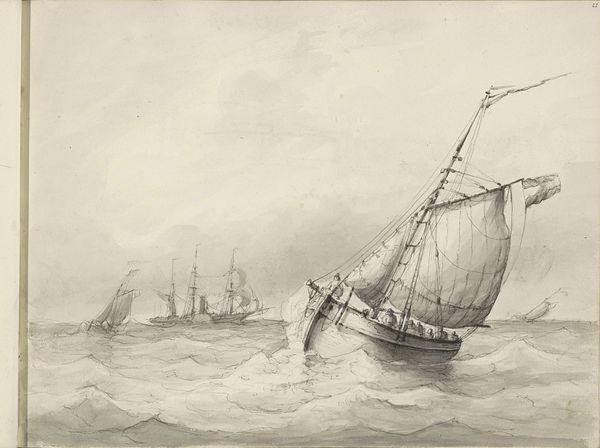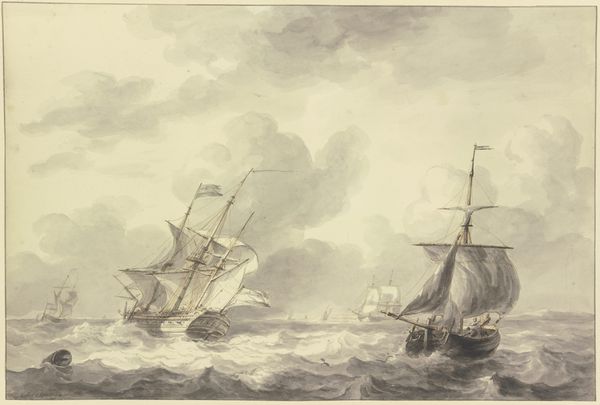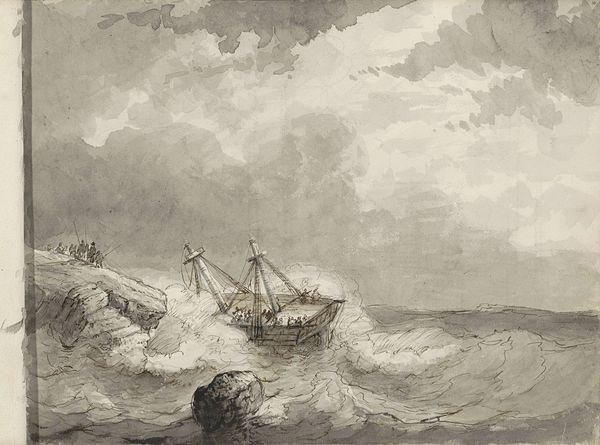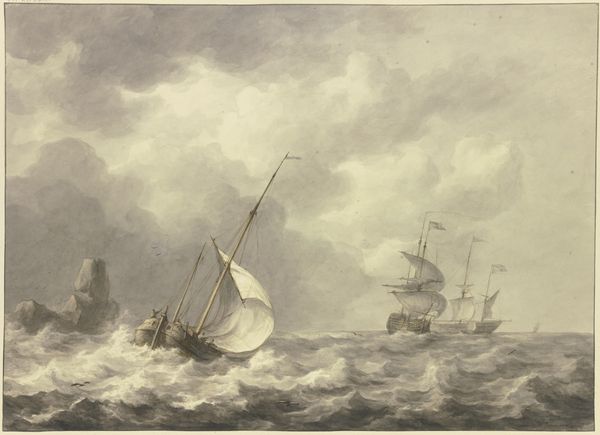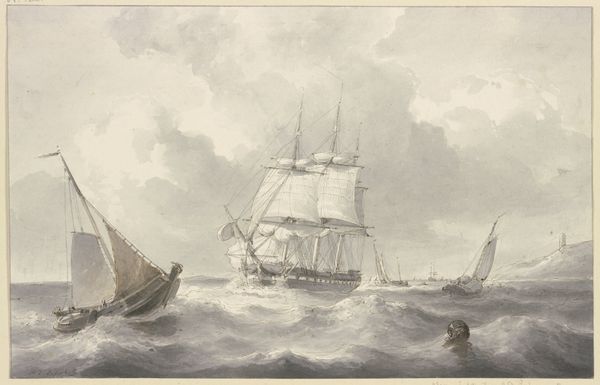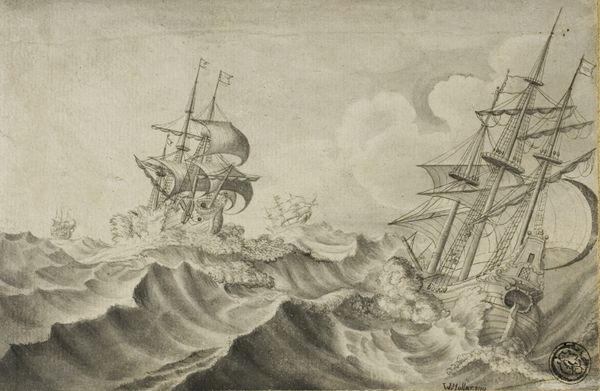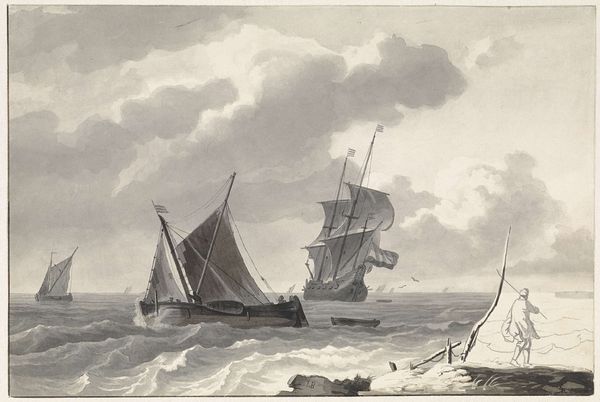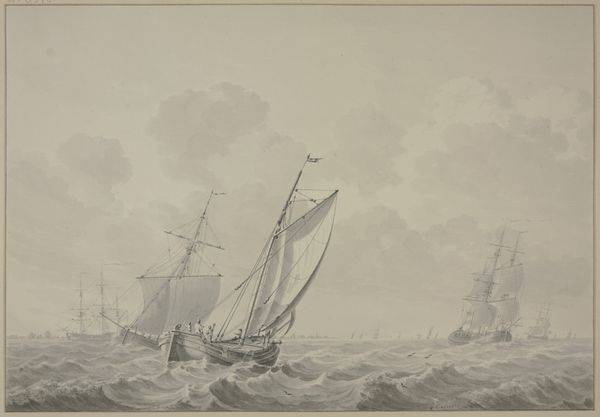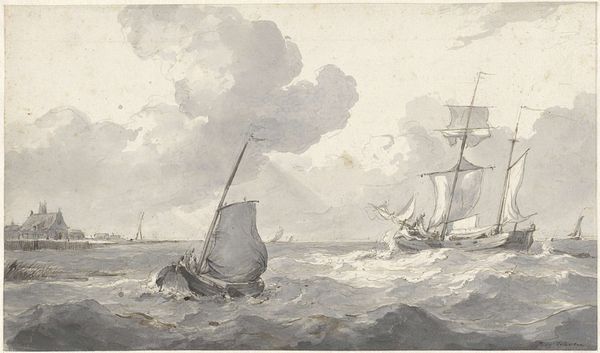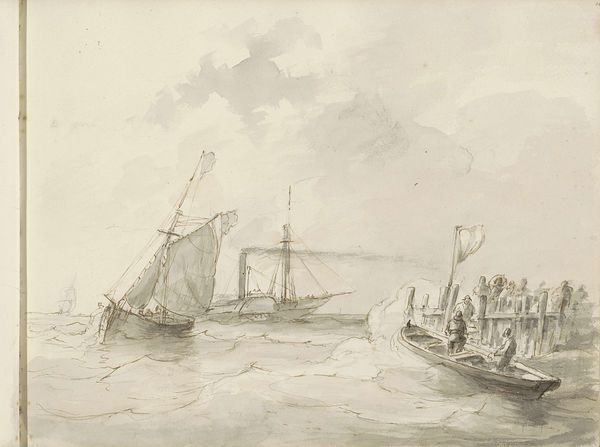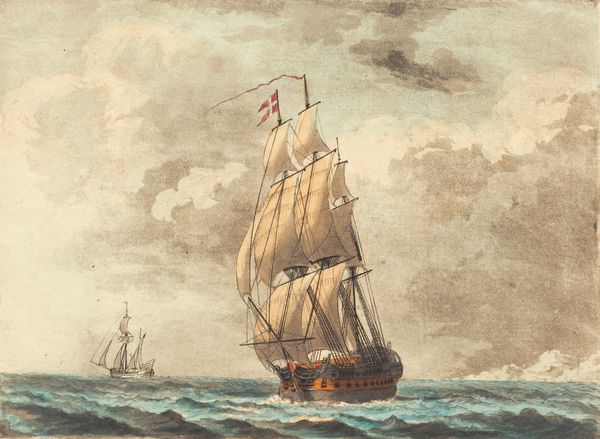
drawing, paper, ink, pencil
#
drawing
#
pencil sketch
#
landscape
#
paper
#
ink
#
romanticism
#
pencil
#
genre-painting
#
realism
Copyright: Rijks Museum: Open Domain
Editor: We're looking at "Zeilschepen op een woelige zee," or "Sailing Ships on a Rough Sea," by Petrus Johannes Schotel, dating from around 1825 to 1875. It's a drawing in ink and pencil on paper, currently held at the Rijksmuseum. It feels incredibly turbulent and dramatic; what stands out to you when you look at it? Curator: The turbulent sea, indeed! It’s a fantastic example of how the sea itself can function as a powerful symbol. Think about the sheer force of nature represented here. Throughout history, the sea has been seen as both a life-giving force and a destructive one. In this drawing, which aspect seems more dominant to you? Editor: Definitely the destructive side, the way the boats are tossed about... they seem so fragile against those huge waves. Curator: Precisely! Now, consider what those boats might symbolize. Vessels often represent journeys, but also the precariousness of human endeavors in the face of overwhelming forces. Look closely at the tilt of the masts, the dark, roiling clouds… What emotions does Schotel seem to be evoking? Editor: Anxiety, I think. Maybe even a little bit of fear? The people on board look so small and helpless. Curator: That's it! Schotel taps into primal anxieties about nature's power, and by extension, the fragility of life itself. Even today, these symbols resonate, tapping into a deep well of cultural memory about humanity's relationship with the sea. Does seeing the symbolism alter your understanding? Editor: It does, actually. I was just thinking about the immediate drama, but now I see the deeper themes he's exploring. Curator: Exactly. Art invites us to interpret visual language and decipher its historical meaning, and even its ongoing resonance. Editor: I will never look at seascapes in quite the same way again! Thanks for pointing out the layers of symbolism.
Comments
No comments
Be the first to comment and join the conversation on the ultimate creative platform.
